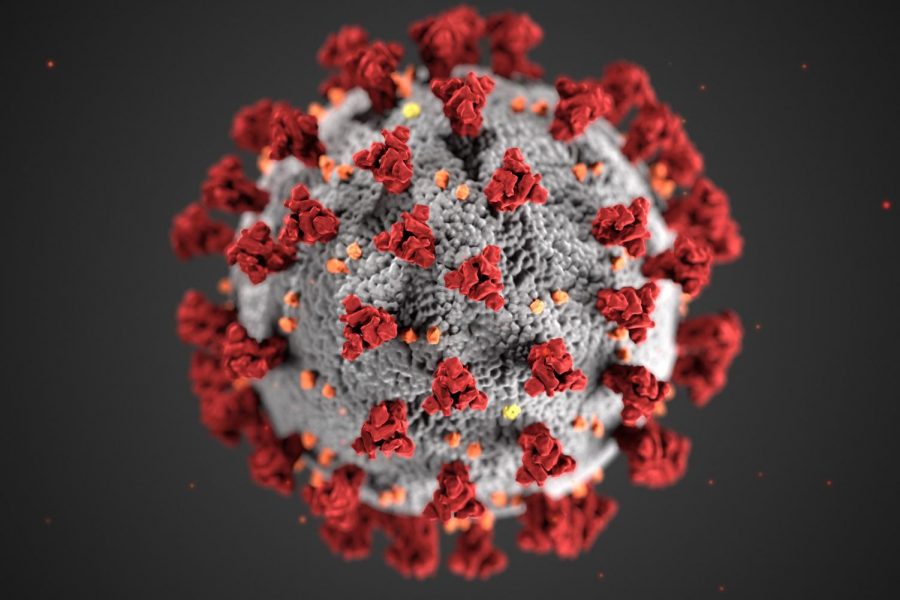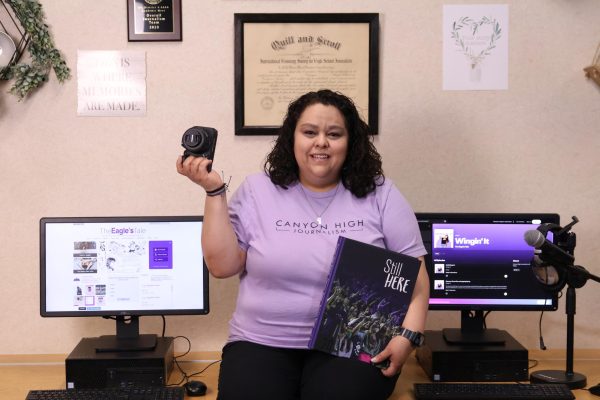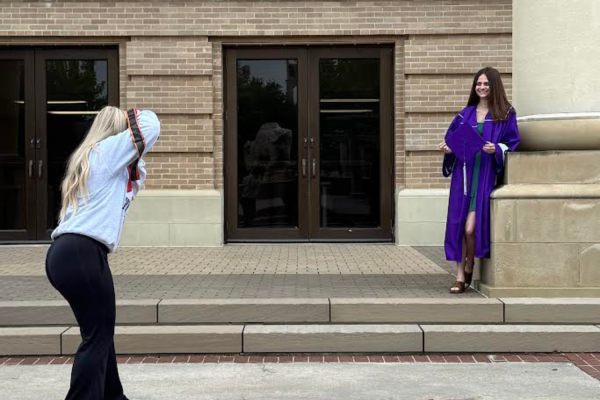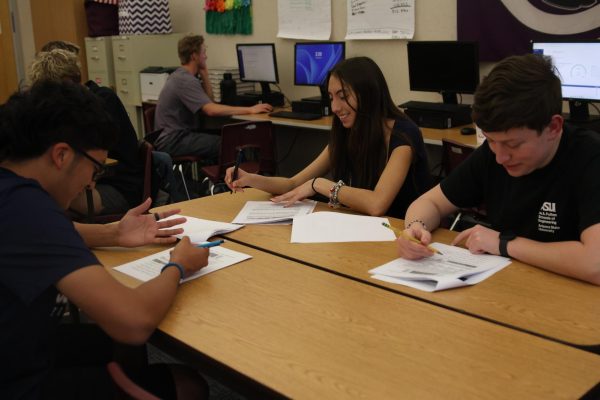COVID-19 outbreak: What is this virus?
Expert breaks down facts, shares tips
Courtesy of the CDC Image Library
COVID-19, SARS and MERS are all outbreaks caused by the coronavirus, named for the spikes on the virus’ surface that create the impression of a crown.
Amarillo confirmed the first local cases of COVID-19 Wednesday, March 18. COVID-19 was identified as a new strain of the coronavirus in December 2019.
COVID-19 fuses to epithelial cells, creating a respiratory infection with symptoms mirroring that of the common flu. The virus is categorized into four families, two of which affect humans, said Dr. Todd Bell, Director of Infection Control and Employee Health for Texas Tech University Health Sciences Center.
“The coronaviruses, in general, seem to be mainly viruses that circulate in bats,” Bell said. “Sometimes there’s an intermediary host, but as the coronavirus–which is an RNA virus, and because that tends to have a higher mutation rate than some other viruses–as it mutates, it’s able to potentially adapt to a new host. So occasionally it will jump from species to species.”
The virus originated in Wuhan, China as a result of a direct or indirect interaction between a human and a bat.
“There’s a concept called ‘one health,’ and that is that people’s health is dependent on the health of the environment and our interactions with animals and the environment,” Bell said. “As the population of the world gets larger, we begin to demand more resources from our environment. As we expand into that environment, that creates more opportunities for an interface between the environment and people. It appears that the virus was already circulating in bats. At some point, there was an interaction that allowed the virus to be able to take up an infection in its new host.”
Viruses similar to this tend to mutate over time to achieve a level of maximum transmission, or efficiency of transmission, resulting in their loss of virulence.
“The 1918 influenza, which was called the Spanish Flu, had a really high mortality rate initially,” Bell said. “Then it actually just became just the seasonal flu–which certainly has problems and causes problems–and was the primary circulating strain of seasonal influenza all the way up until 1957.”
Bell said viruses similar to these tend to attenuate some in severity while also increasing some in transmissibility. A COVID-19 vaccine is anticipated in about 18 months.
“This virus is already very transmissible,” Bell said. “I think at the end of this, it’s going to end up being something similar to a very bad flu season, though the mortality rate is considerably higher than with flu. Now the flu kills people every year, some tens of thousands of people every year–in the United States even. But it’s something that civilization will survive. Right now, its a matter of basic public health and basic prevention mechanisms.”
To decrease the odds of receiving COVID-19, medical professionals encourage continuous hand sanitation, proper coughing and sneezing techniques and social distancing.
“After exposure, people may have anywhere between two and up to 14 days before they begin to exhibit symptoms,” Bell said. “We want people to be sure and wash their hands or use hand sanitizer frequently–multiple times per day. We don’t want people to be touching their face through the course of the day because this creates an opportunity for the virus to spread. We want folks to be sure to cover their mouths or nose if they cough or sneeze because, with that latency period, people may potentially have the virus and not realize it yet. People who are sick need to stay home and avoid contact with others, and even people that are not sick should avoid unnecessary contact.”
Bell said the pandemic has an economic impact over the globe, causing drops in the stock market and a decrease in gross domestic production around the world.
“This is a global economy, so if there’s a problem in one part of the world, it oftentimes affects other parts,” Bell said. “There’s also things we may not think of initially. For example, in hospitals there are some medicines that are dependent on China to be able to come up with different components to the medicines. So, those medicines may end up being in somewhat short supply until we see that the epidemic has passed and those production facilities come back online in different parts of the world where they’re being produced.”
One local and national effect is the lack of personal protective equipment within the healthcare community. Citizens and healthcare workers are sewing their own masks to compensate.
“It is vital that we get appropriate PPE to healthcare workers,” Bell said. “If healthcare workers are unable to work because they are sick, that has a significant and detrimental impact all across the community. Everyone depends on the healthcare workers being there when they have a medical problem.”
Bell said although the coronavirus induced a global panic, the virus has not reacted unexpectedly. Outbreaks are common occurrences, and public health services track them around the world on an ongoing basis.
“It’s not a novel thing to have an outbreak,” Bell said. “So, with the initial reports of the coronavirus, we knew that it had potential to become a global problem because of its mutation rate and because of prior coronavirus outbreaks that have been able to spread, but we didn’t know until we started to see that person-to-person transmission that this was actually going to be an issue. Since that time, basically since mid-January, I don’t know that this virus has done anything unexpected. It’s done what a virus does when it enters into a new population.”

Hi! My name is Abby (with a "y"), and I am elated to be managing editor this upcoming year. This will be my second year on staff, and I consider myself extremely lucky to be a member of this awesome team. I am a junior this year and am one of three drum...













